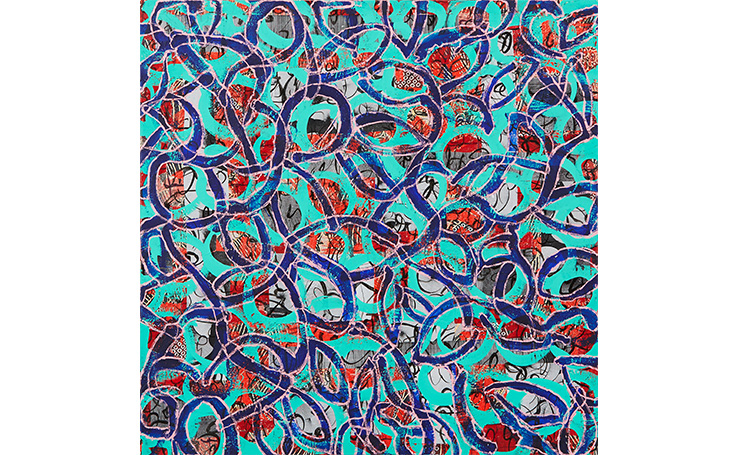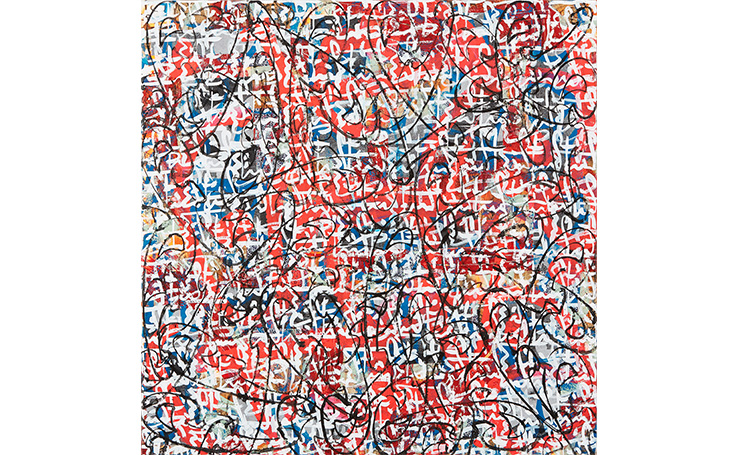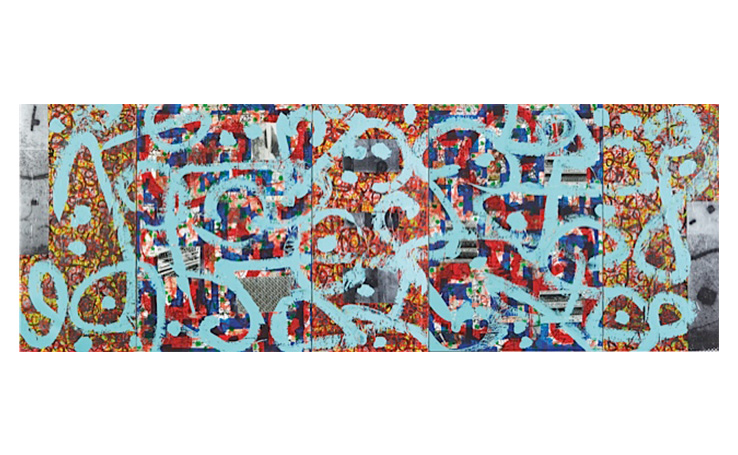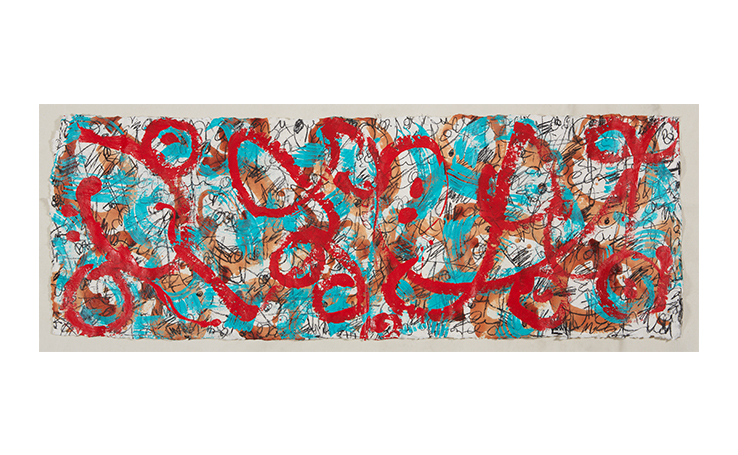Sojourns | Àlex De Fluvià
December 16th 2014 to January 3rd 2015Cuadro Gallery's final exhibition of 2014 will feature a new body of work by Alex de Fluviá. The Barcelona based painter’s canvases encompass a network of cultural observations placed in contrast with his deep mediterranean roots. His body of work, intertwines arabesque symbols, Mashrabia patterns, Shodo calligraphy and graffiti-like motifs, which the artist accumulated over his extensive travels to New York, Cairo, Tokyo and Dubai.
Àlex De Fluvià was born in Barcelona, Spain in 1966. He studied Art History at the University of Barcelona (1990) and photography at the School of Visual Arts, New York (2001). His work is a hybrid of cultural observations accumulated over his travels, juxtaposed with his deep Mediterranean roots. In his body of work, randomness, superimposition and the repetition of signs are intertwined to produce work with universal attributes.
In his continuous search of new expressive possibilities, De Fluvià travelled extensively in North America, Latin America, Africa and Asia. He lived in Cairo for a year, absorbing both the ancestral Egyptian culture as well as that of modern day Cairo. During this period, he explored ways in which to incorporate the Arabesque in order to portray a contemporary and personal vision. De Fluvià also developed a particular interest in Japanese culture and visited Japan for over two months, studying Shodo calligraphy in Tokyo. His works incorporate graffiti-like motifs and expressive connotations of his Mediterranean roots and he integrates Northern Iberian, Arabic and Aramaic characters. Each work resonates a unique pulsating rhythm that is so characteristic of De Fluvià’s work.
Upon his return to his birthplace after eight years abroad, De Fluvià exhibited in several galleries and foundations in Spain. This culminated in an exhibition of his work at the ARCO Art Fair in Madrid and Casa Asia in Barcelona. De Fluvià continues to exhibit his work in galleries in Dubai, Italy, Japan, Korea, Mexico, Portugal, Spain and Switzerland.












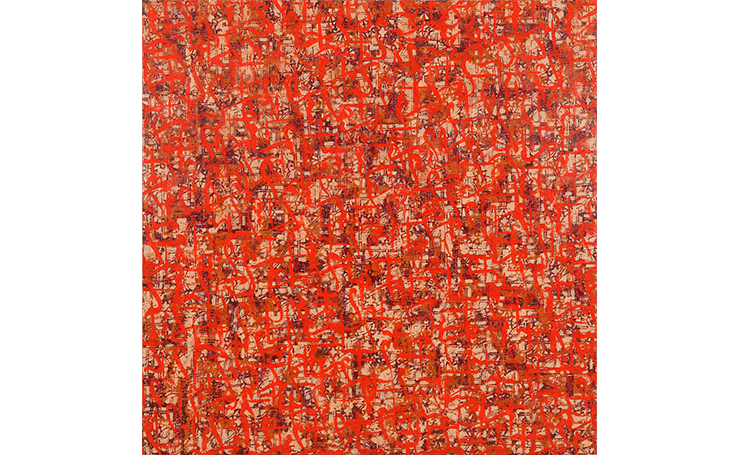

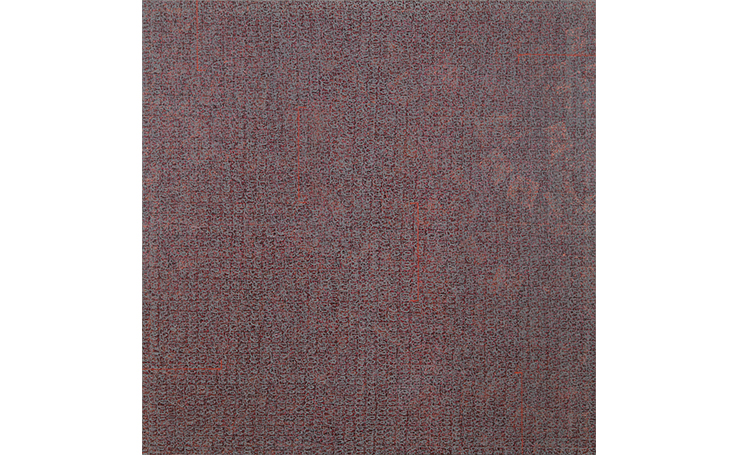

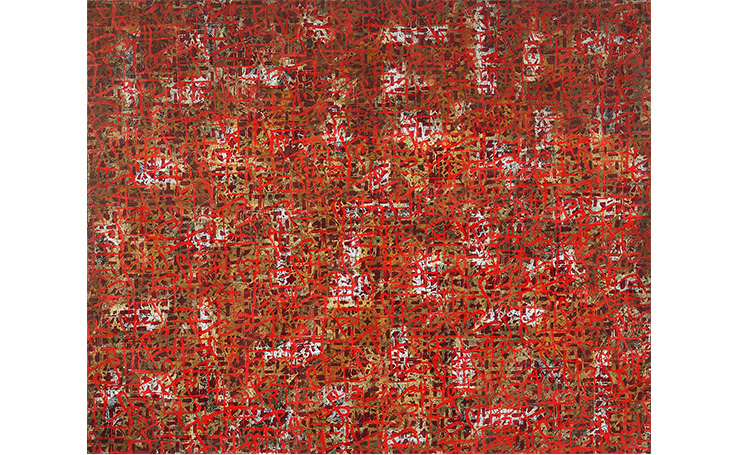

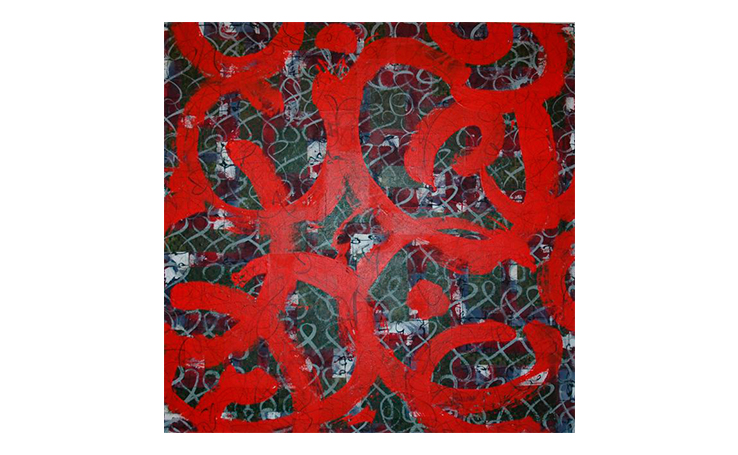

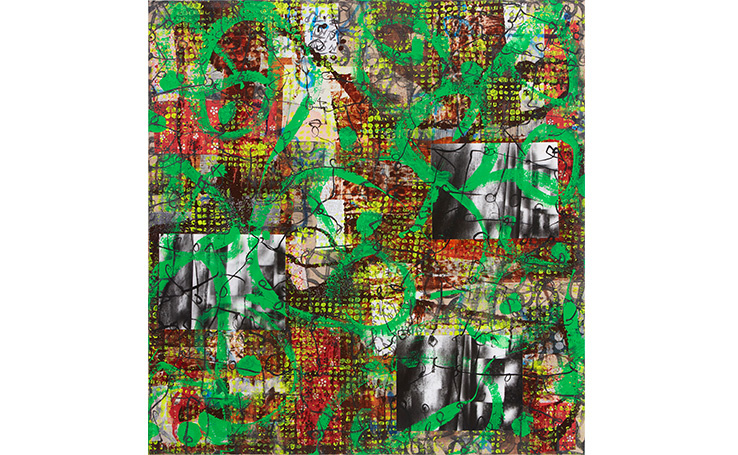
.jpg)
